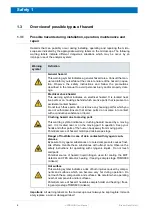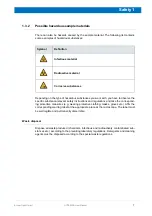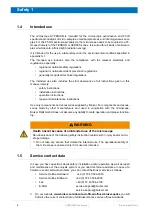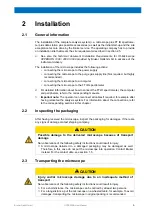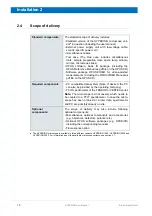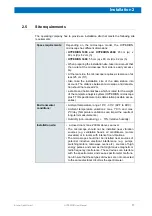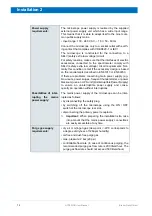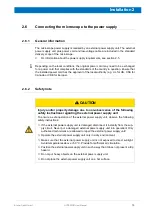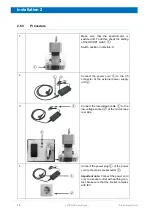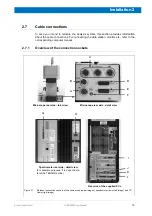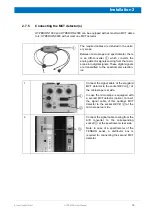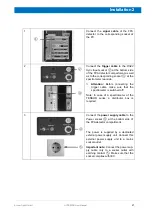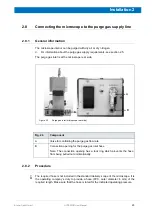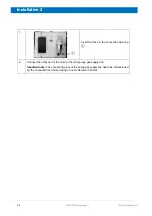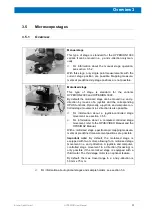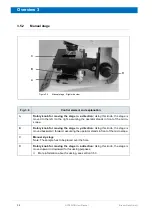
20
HYPERION User Manual
Bruker Optik GmbH
Installation 2
2.7.6
Connecting the FPA detector
Only HYPERION 3000 can be equipped with a FPA detector.
The following cables are included in the delivery scope of the FPA detector: :
• Signal cable
• Trigger cable
• Power supply cable (including external power supply unit)
Bottom side of the FPA detector compartment
A
Figure 2.2:
Cable connectors of the FPA detector
E
D
B
C
Fig. 2.2
Sockets and switches
A
ON / OFF switch
B
Outlet of the signal cable
C
LED
Note:
This LED lights green when the FPA detector is switched on.
D
Socket for connecting the trigger cable
E
Socket for connecting the power supply cable
Summary of Contents for HYPERION
Page 1: ...HYPERION User Manual I 24319 ...
Page 56: ...54 HYPERION User Manual Bruker Optik GmbH Overview 3 ...
Page 148: ...146 HYPERION User Manual Bruker Optik GmbH Repair and Maintenance 6 ...
Page 168: ...166 HYPERION User Manual Bruker Optik GmbH Specifications A ...
Page 172: ...170 HYPERION User Manual Bruker Optik GmbH Measurement parameters B ...
Page 174: ...172 HYPERION User Manual Bruker Optik GmbH Spare parts and consumables C ...
Page 175: ...173 Bruker Optik GmbH HYPERION User Manual D System diagram ...
Page 176: ...174 HYPERION User Manual Bruker Optik GmbH System diagram D ...

